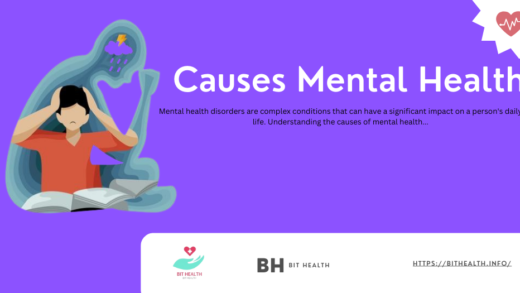Intro
Enduring a heart-healthy diet is central to overall well-being and durability. The food choices we make can have a significant impact on our heart health, so it’s essential to understand the secrets to unlocking a heart-healthy diet. By incorporating nutrient-rich foods and making mindful choices, we can support our heart health and reduce the risk of cardiovascular diseases. In this blog post, we will delve into the key components of a heart-healthy diet and explore how you can make simple yet impactful changes to improve your heart health.
The Foundation of a Heart-Healthy Diet
Diving into the heart of a heart-healthy diet reveals a colorful and diverse palette of foods that are as delicious as they are nourishing. Imagine your kitchen brimming with the earthy greens of spinach and kale, the vibrant oranges of carrots and sweet potatoes, and the hearty browns of quinoa and whole wheat bread. This isn’t just about eating your veggies (though they are definitely stars of the show); it’s about creating a symphony of flavors and nutrients that dance together to keep your heart beating strong and happy.
At its essence, a heart-healthy diet thrives on the variety and wholesomeness of unprocessed or minimally processed foods. Picture fresh, plump berries bursting with antioxidants, lean proteins like chicken or tofu tenderly cooked to perfection, and the rich, satisfying crunch of almonds or walnuts. These are the building blocks of meals that fuel your body and nurture your heart.
Incorporating these elements into your daily eating habits means focusing on foods low in saturated fats and cholesterol, which can clog arteries and strain the heart, and high in fiber and essential nutrients that support good circulation and reduce inflammation. It’s about making thoughtful choices, like opting for olive oil over butter or choosing fish rich in omega-3 fatty acids for dinner.
But don’t let the focus on health fool you into thinking this diet is bland or restrictive. On the contrary, it invites creativity in the kitchen. Experiment with spices and herbs to add rich flavors without the need for salt. Discover the joy of cooking from scratch, where you control the ingredients and the taste. Every meal is an opportunity to nourish your heart and delight your taste buds.
Fats – The Good, The Bad, and The Heart-Healthy
Navigating the world of fats in our diet can feel like walking through a maze—confusing and a bit daunting at first. But, fear not! Let’s break it down into simple terms to help you understand how to embrace fats as a positive part of your heart-healthy journey. Imagine fats as characters in a story: there are heroes, villains, and those that fall somewhere in between.
The villains in our story are the saturated and trans fats. These are the types found lurking in many processed foods, fast foods, and baked goods, ready to raise your cholesterol levels and put your heart at risk. It’s best to limit these fats as much as possible, keeping our dietary narrative free of such antagonists.
On the flip side, the heroes of our fat tale are the unsaturated fats—monounsaturated and polyunsaturated fats. These are the avengers of heart health, found in our trusty sidekicks like avocados, olive oil, nuts, and seeds, and fatty fish like salmon and mackerel. Including these fats in your diet isn’t just about adding richness and flavor to your meals; it’s about arming your heart with the tools it needs to fight off diseases by lowering bad cholesterol levels and reducing inflammation.
Remember, our diet doesn’t need to be a battleground against fats. By choosing our fat sources wisely and understanding their roles, we can turn fats into allies in our quest for a heart-healthy lifestyle. Let’s embrace the good fats as part of our heart-healthy ensemble, savoring their benefits without fear, as we journey toward wellness together.
Salt and Sugar – Finding the Right Balance
Embarking on a heart-healthy journey means finding the sweet spot between too much and just right, especially when it comes to our consumption of salt and sugar. These two culinary culprits, when overindulged, can lead our heart health astray, but with a pinch of knowledge and a sprinkle of creativity, we can master the art of balance.
Let’s start with salt, the stealthy spice that can elevate flavors but also blood pressure if we’re not careful. Instead of letting salt take center stage, invite a cast of herbs and spices to your culinary creations. Turmeric, garlic, basil, and rosemary not only infuse dishes with rich flavors but also come with their own heart-healthy benefits. By turning down the salt shaker and turning up these aromatic alternatives, you create meals that are a feast for your taste buds and your heart.
Switching gears to sugar, it’s important to distinguish between the natural sweetness found in fruits and the added sugars lurking in many processed foods. Embrace the natural sweetness of berries, apples, and oranges. These sweet treats from nature come bundled with fiber, vitamins, and antioxidants, making them a heart-smart choice for satisfying sugar cravings. When baking or cooking, consider substituting refined sugars with alternatives like pure maple syrup or honey but remember, moderation is key.
By reimagining the role of salt and sugar in our diets, we can enjoy a tapestry of tastes without compromising our heart health. It’s all about making informed, mindful choices that celebrate flavor and well-being in equal measure.
The Power of Plant-Based Proteins
Imagine embarking on a culinary adventure where every bite not only tantalizes your taste buds but also champions your heart health. That’s the magic of incorporating plant-based proteins into your diet. These nutritional powerhouses, including beans, lentils, tofu, and nuts, invite you to explore a world of flavors and textures that can transform your meals from mundane to extraordinary.
Diving into the world of plant-based proteins opens up endless possibilities for creativity in the kitchen. Picture crafting a hearty lentil stew that warms your soul or whipping up a batch of spicy black bean burgers that even the most devoted carnivores at your table would eagerly devour. The beauty of these ingredients isn’t just in their versatility but also in their heart-healthy benefits.
Plant-based proteins stand out as heroes in the narrative of nourishment, offering a rich source of fiber and essential nutrients without the baggage of cholesterol and saturated fats found in animal proteins. This shift towards plant-based options can lead to a significant improvement in heart health, paving the way for a life full of vitality and joy.
Moreover, embracing plant-based proteins is like joining hands with the environment, promoting sustainable eating habits that benefit both our bodies and the planet. So, let’s relish the richness of plant-based proteins and allow their strength to fortify our hearts as we journey through the delicious landscape of heart-healthy eating.
Decoding the Mystery of Whole Grains
Whole grains are like the secret code to unlocking a treasure chest of heart-healthy benefits. Imagine your pantry stocked with the golden hues of quinoa, the rustic charm of brown rice, the hearty presence of oats, and the wholesome goodness of whole wheat. These aren’t just your ordinary grains; they’re the unsung heroes in the quest for a vibrant heart and a nourished body.
Embarking on a journey with whole grains leads you down a path of exploration and discovery. Each grain brings its own unique texture and flavor to the table, making every meal an exciting adventure. Think of a morning starting with a warm bowl of oatmeal sprinkled with cinnamon and topped with fresh berries—a simple, yet profoundly heartwarming way to kickstart your day.
But the magic of whole grains goes beyond their taste. These nutritional powerhouses pack a punch with fiber, vitamins, and minerals, all of which play pivotal roles in heart health. They work quietly behind the scenes, helping to lower cholesterol levels, stabilize blood sugar, and keep the digestive system running smoothly. It’s like having a team of superheroes inside you, fighting off villains like heart disease and type 2 diabetes.
Incorporating whole grains into your diet is easier than decoding ancient hieroglyphics. Swap out white rice for brown rice in your next stir-fry, or try using quinoa as a base for your salads. Even something as simple as choosing whole wheat bread over white can set the stage for a healthier heart.
So, let’s lift the veil on whole grains and let their true colors shine through in our meals. By inviting them into our kitchens and our hearts, we embrace a world of flavor and health that benefits us from the inside out.
Staying Hydrated the Heart-Healthy Way
Embarking on the path to hydration, it’s essential to remember that water is our most faithful companion in maintaining a heart that beats with vigor and health. Imagine your body as a serene, flowing river, with water nourishing every nook and cranny, ensuring that everything functions in harmony. Hydration is not just about quenching thirst; it’s about creating an environment where our heart can thrive, pumping life with ease and grace.
But let’s sprinkle a bit of creativity into our hydration habits! While water should be the cornerstone of our drinking habits, infusing it with slices of lemon, cucumber, or berries can transform a simple glass of water into a delightful, refreshing elixir. These natural infusions add a dash of excitement and flavor, making the act of staying hydrated something to look forward to throughout the day.
Consider also the gentle warmth of herbal teas, a hug in a mug, that can soothe the soul while keeping you hydrated. Free from caffeine and rich in unique flavors, herbal teas are a wonderful addition to your hydration routine, offering a moment of tranquility and heart health benefits in every sip.
Hydration is the unsung hero of a heart-healthy lifestyle. By embracing water and its creative companions, we ensure our heart dances to the rhythm of health, buoyed by the life-giving essence of hydration.
Moderation and Mindful Eating for Heart Health
Embarking on the heart-healthy journey, it’s pivotal to embrace the art of moderation and the practice of mindful eating. Imagine sitting down to a meal, each dish a vibrant palette of colors and textures designed to nourish both body and soul. It’s not just about what you eat, but how you eat. Savoring each morsel, you become an active participant in the dining experience, allowing your body to absorb the full spectrum of flavors and nutrients.
This thoughtful approach to eating encourages a harmonious relationship with food, where each bite is an opportunity to support your heart’s well-being. By introducing mindfulness at the dining table, you naturally gravitate towards portions that satisfy without overindulging, tuning into your body’s signals of hunger and satiety. It’s a gentle reminder that in the world of heart-healthy eating, how we eat is just as important as what we eat. Engaging in this mindful practice, we nourish not just our hearts, but our overall sense of joy and fulfillment at every meal.
Smart Snacking for a Stronger Heart
Navigating the landscape of snacking doesn’t mean you have to wander into the territory of the unhealthy. Consider the world of snacks as a treasure chest, filled with vibrant gems in the form of fruits, vegetables, nuts, and seeds. These are not only jewels for your palate but champions for your heart. Picture crunchy carrot sticks paired with a creamy, heart-healthy hummus, or a handful of almonds that bring both crunch and sustenance to your afternoon slump.
Imagine the burst of sweet juiciness from a ripe berry or the satisfying chew of a dried apricot. These smart snack choices are more than just a way to quell hunger; they’re an opportunity to infuse your day with additional nutrients, fiber, and antioxidants, which all play a starring role in supporting heart health. By turning to these natural, nutrient-packed options, you invite both variety and vitality into your snacking habits, keeping your heart strong and your taste buds thrilled. Let’s make snacking a joyful and healthful part of our heart-healthy diet, embracing the goodness nature offers to keep our hearts beating with happiness and health.



